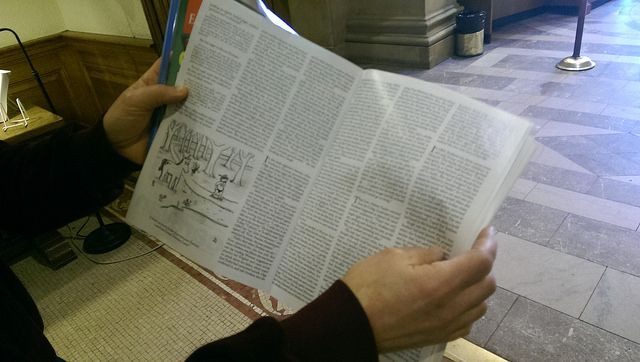Looking At Cartoons Over Time, It's Easy To See When More People Decided Against Having Kids

To understand changing attitudes about parenting, two researchers from Indiana University Bloomington arrived at a unique approach. They examined New Yorker Magazine cartoons from the 1920s through the early 21st Century. During eras when child-rearing was depicted (in cartoons) as particularly difficult, a greater proportion of people opted out of having kids, the researchers said.
“Contemporary cartoons celebrate children but also recognize the significant challenges children create for parents,” Jaclyn Tabor, a doctoral student in sociology, stated in a press release. “Cartoons from the 1920s and 1930s — when rates of childlessness were also high — reveal a similar set of mixed attitudes.”
How do you understand and track the real attitudes of people, and not just their prettied up answers to survey questions? Sociologists ask themselves this question daily. When it comes to certain topics, people may worry they could hurt someone else and so they will not express their true feelings. Certainly, attitudes about parenting come under this heading. Past research, for example, uniformaly presents a very static attitude about child-rearing and children, Tabor noted. This rigidity suggests falsehood... so, how do you get to the truth?
Humor, Tabor noted, is revealing. "Humor requires cultural resonance—comedy often hinges on the revelation, distortion or exaggeration of cultural realities," she and her co-author Dr. Jessica Calarco, an assistant professor in the department of sociology at IU Bloomington, noted in their study. They added, "As a result, humor tends to reveal (and play with) commonly held ideas about society, its inhabitants, and their behaviors."
To undertake the current study, then, Tabor and Calarco focused on cartoons from The New Yorker magazine as a way to understand feelings and attitudes about parenting and children. Specifically, they analyzed the content of humorous illustrations published between the years of 1925 and 2006. Unlike other materials previously used in research, the cartoons represented parenting with great variety, showing changing attitudes and fluctuations over time. Overall, the most prevalent theme (appearing in about 28 percent of the cartoons) concerned the benefits of children for society, according to their analysis. In opposition to this, the next most common theme focused on the costs of children for society (nearly 18 percent), where kids were portrayed as a public nuisance. The third most common theme (again nearly 18 percent) highlighted the cost of having children and how they interfere with parental ambitions, freedom, and intimacy, while fourth most common theme (about 17 percent) portrayed children as a natural part of the human experience. Additional themes portrayed in the cartoons included how children benefit parents (12 percent), good parenting (nine percent), and bad parenting (five percent).
To illustrate how a theme might play out, in recent decades, many cartoons showed parenting to be a time-consuming, all-important project. This was especially true in depictions of affluent or highly educated families. During these same decades, the researchers noted, a dramatically increased number of adults (also known as "potential parents") have chosen not to have kids. What’s more, the researchers said, this is especially true among those who are affluent or highly educated.
In light of these findings, Tabor and Calarco believe that, during the historical periods when child-rearing poses high cost to parents — and the sacrifice is widely recognized — those folks who are reluctant to have children may easily opt out.
Source: Tabor J, Calarco J. The Parent Trap: What New Yorker Cartoons Reveal About Competing Trends in Childrearing, 1925-2006. IU Presentations. 2015.



























